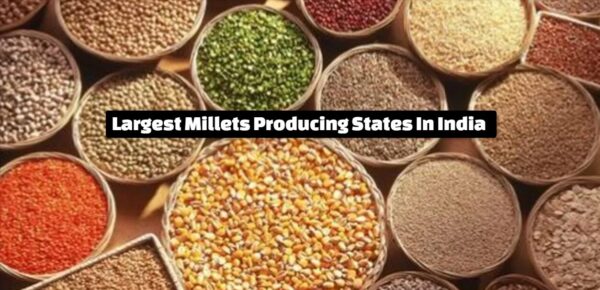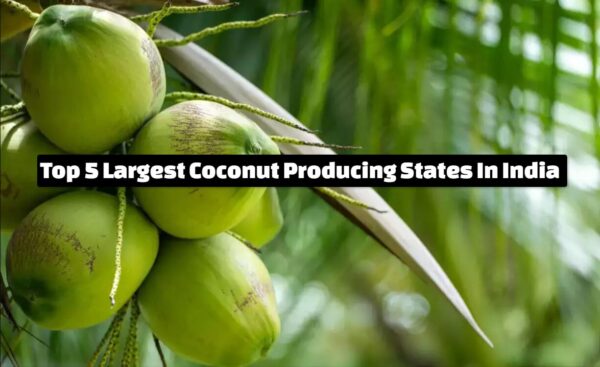We can see the heart in Indian farming in production of vegetables, which is vital to provide our nation’s huge people with a healthy diet and also to help the economy expand. In 2024, vegetable farming will be paying a great deal of focus to certain States of India. At present we’ll look at the top five green leaf states in India this season.
Largest Vegetable Producing States in India
1. Uttar Pradesh:
Uttar Pradesh retains its leading position in the field of vegetable cultivation since it is the most prolific producer of vegetables across the nation. The state that enjoys favorable agroclimatic conditions and robust irrigation facilities, as well as a strong infrastructure to support vegetable farming could be better placed to ensure that the farming process is more durable and profitable. Districts such as Meerut which is the Western part, provide the vegetable industry a boost production through municipal centers. Uttar Pradesh is very good since it supplies the vast majority of the people living there with modern agriculture and subsistence system that is both at the state level.
2. West Bengal:
West Bengal is on an upwards trajectory to become an influential player in the Indian value chain of vegetables. Diversity in the structure, geographical distribution, deep soil, and ample water make for ideal conditions for growing vegetables across the entire state. In the state, West Bengal farmers not only utilize the traditional methods of farming, but also incorporate newer practices in agriculture, providing plenty of modern and traditional vegetables. The vast expanses that comprise Hooghly, Bardhaman and North 24 Parganas are not just the site of home-grown vegetables but also provide food for the restaurant industry as well as the markets for exports.
3. Maharashtra:
Maharashtra is more so than other states and could be regarded as the leader in vegetable production. The state is able to benefit from its varied and diverse ecosystem and also the irrigation system. The areas of the state that are situated in the west and central areas of the state provide excellent opportunities for growing diverse vegetables, including those that are planted throughout the entire year. Some examples include the well-known regions in Nashik, Pune, and Ahmednagar that are dominated by the cultivation of vegetables. Maharashtra’s knowledge of Musen and its use of precision, safety in cultivation, and a slant towards the market’s suggestions load vegetables with the best quality, contributing to the state’s economic growth through agriculture.
4. Andhra Pradesh:
Andhra Pradesh becoming an important contribution to India’s production of vegetables and all stakeholders need to find the barriers to improve production and reduce resistance. The diverse regions of the state (coastal semi-arid, arid and hilly) are able to provide support for ecosystems for various types of vegetables. Alongside the districts, which include Krishna, Guntur, and East Godavari, vegetable cultivation takes place, and they are able to receive projects such as irrigation and extension services. Andhra Pradesh’s emphasis on organic farming, diversification of crops as well as a farmer welfare initiative helps increase the supply of fresh vegetables both nationally and internationally as well as meeting market demands of the local markets.
5. Telangana:
The state of Telangana is, in spite of this, shows incredible vegetable production capabilities which were achieved not only through its progressive agricultural policies as well as its investments in infrastructure. The semiarid climate of the state nature and a well-functioning irrigation system allow for continuous crop growth. Districts such as Medak, Rangareddy, and Karimnagar are considered to be vegetable basket regions in the sense that Telangana concerns. As a result of the state’s priority for the use of technology in education for farmers, as well as market connections, the cultivation of vegetables in Telangana does not just increase efficiency and profitability, but it can also be a means of agricultural development and food security.
Conclusion:
The marginal or small farmers form the primary of India’s production of vegetables. A favorable climate aids in this. Additionally, the government offers various policies to help to support this. The five top states for vegetable production: Uttar Pradesh, West Bengal, Maharashtra, Andhra Pradesh and Telangana- are a testament to the fact that despite drought, famines, floods and general vulnerability our agricultural sector is robust that it can bounce through the adversities it encounters as well as being so effective it is a major contributor in the economic growth. With states focusing their efforts on the development of infrastructure, innovation as well as the health of farmers the sectors will be able to sail in the future with ease and the goal of addressing the need for food and ensuring economic prosperity for all citizens will be met.
FAQs:
Q1. What characteristics are the most important factors that contribute to the high level of production of certain vegetables like peppers, tomatoes, cucumbers and so on. within these areas?
Answer: Conditioners that influence life-style activities and water management facilities construction of infrastructure and financial assistance from the government can result in high yields in these states.
Q2. Do you know of any testing or laws that are enacted by these states to ensure the cultivation of these vegetables without risk to the quality or security?
Answer: States impose good standards, good practices in agricultural practices, and safety rules to ensure that consumers are protected and the safety and quality of their vegetables is guaranteed.
Q3. Does technology play a role to grow vegetable crops in the states mentioned above? If so, how much it has assisted?
Analyse: Technology acceptance by farmers from a perspective. This implies precision cultivation, protection from pests, and mechanization improve production effectiveness and sustainability in vegetable fields.



